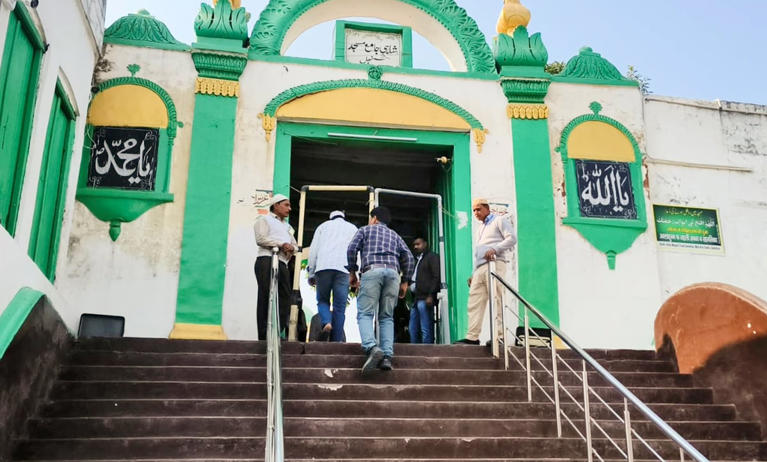Supreme Court halts Sambhal civic body’s notice on disputed well, seeks report in 2 weeks
News Mania Desk / Piyal Chatterjee / 11th January 2025

There will be neither worship nor sacred bathing at the well adjacent to the Shahi Jama Masjid in Sambhal, Uttar Pradesh. On Friday, the Supreme Court halted the execution of a “notice” that was supposedly issued by the Sambhal municipal authorities concerning the well. It requested a status update in two weeks while the UP government argued that the well was located on government property.
This occurred after the mosque management committee stated that the notice, a public poster featuring the name of the Sambhal Nagar Palika, indicated that the well was situated in a corner of the Hari Mandir. Hindus and Muslims are engaged in a conflict regarding the mosque, with the former asserting that the Mughal-period mosque was constructed after demolishing a temple named Hari Mandir. The panel of Chief Justice of India Sanjiv Khanna and Justice Sanjay Kumar stated, “Issue notice returnable by 21 February 2025.” Notice acknowledged by Respondents. In the meantime, a status update will be submitted in 2 weeks. In the meantime, Respondents will not act upon the notice (Nagar Palika Notice) concerning the well.
The bench was reviewing a request submitted by the committee in an ongoing appeal concerning the November 19, 2024 order of a local court that designated an advocate commissioner to inspect the mosque in light of Hindu assertions regarding it. The survey incited violence in Sambhal, resulting in the deaths of five individuals.
On December 12, 2024, the Supreme Court, while reviewing a set of petitions concerning the Places of Worship Act, 1991, directed that in ongoing cases, such as the one in Sambhal, lower courts must refrain from issuing decisive interim or final orders, including surveys. On Friday, Senior Advocate Huzefa Ahmadi, appearing for the mosque committee, said that the Sambhal district administration “is conducting a purported drive to revive old temples and wells in the city with reports indicating that at least 32 old unused temples have been revived and 19 wells have been identified which are being made operational for public prayers/use”. One of these, he said, was the well located near the mosque.
The CJI asked what was the harm in allowing others to draw water from the well and use it. To this, Ahmadi said the well was currently being used for the purposes of the mosque. “We have been drawing water from the well since time immemorial,” he said. “They will dig it,” he said.
Ahmadi then referred to the poster and said, “But see the notice. They are calling it a Hari Mandir and puja etc will be started now.”
“No, you cannot do that … Please do not do that,” the CJI remarked and asked for a status report. Representing the Hindu petitioners, Advocate Vishu Shankar Jain stated that individuals were venerating the well, and he possessed photographs. The bench stated that he was allowed to submit the photographs as evidence.
Looking at pictures of the well, Ahmadi mentioned that one half of its circumference is situated within the mosque grounds while the other half is outside. CJI Khanna stated that Google Earth maps suggested the well was entirely separate. “First I did not notice the photograph. When I saw Google Maps, it looked like it was outside. So I put that query.”
The CJI said the court was “keeping a close watch so that peace and harmony is maintained”.
Appearing for the UP government, Additional Solicitor General K M Nataraj said the well is located on government land.
Ahmadi said the “state is being partisan”.






